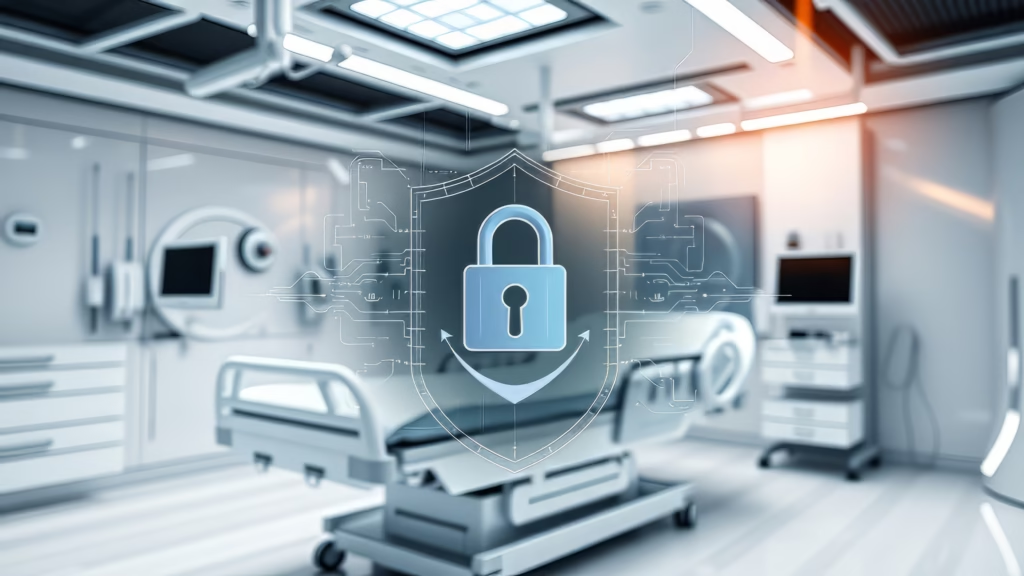Picture Archiving and Communication Systems (PACS) streamline medical imaging storage, sharing, and access, enhancing patient care and workflow efficiency for healthcare providers.
Revolutionising Radiology
Picture Archiving and Communication Systems (PACS) development began in the 1960s when digital imaging technologies became apparent in radiology. However, until the 1980s and 1990s, PACS emerged as a comprehensive solution for managing and storing medical imaging data.
In the early days of PACS, this technology was primarily used for storing and displaying digital images. Consequently, replacing traditional film-based X-rays with digital images viewed on computer screens. However, these early systems were expensive and complex, requiring specialised hardware and software.
As PACS technology advanced, new features and capabilities were added, such as image analysis tools, 3D imaging, and advanced networking capabilities. In addition, in the 2000s and 2010s, PACS began to move to a web-based model, allowing for more efficient and accessible storage and management of medical imaging data.
Today, PACS is an essential component of modern radiology departments, providing healthcare providers with fast and reliable access to patient imaging data, improving diagnosis and treatment planning, and reducing the need for physical storage of medical images. In addition, PACS has evolved to incorporate artificial intelligence (AI) and machine learning, enabling more advanced analysis and interpretation of medical images.
PACS integrates into healthcare facilities such as hospitals and clinics to store and manage medical images, such as X-rays, CT scans, MRIs, and ultrasounds.
PACS typically includes software tools and hardware components, including image acquisition devices, image display workstations, image storage servers, and network infrastructure. The system streamlines the management of medical images by allowing healthcare professionals to access and review images from any location within the healthcare facility and remotely via a secure network.
The benefits of PACS include improved patient care through faster and more accurate diagnosis, increased efficiency of healthcare delivery, reduced costs associated with film-based imaging, and enhanced collaboration and communication among healthcare professionals. PACS has become an essential tool in modern healthcare, enabling faster and more efficient access to medical images and improving the overall quality of patient care.
From Film to PACS: The Transition to Digital Medical Imaging
PACS offers several advantages over traditional film-based medical imaging systems and includes the following:
- PACS eliminates the need for manual film processing and storage, which can significantly reduce the time and effort required to manage and retrieve medical images. Instead, images can be viewed, accessed, and shared quickly and easily from any location with secure network access.
- PACS eliminates the need for costly film and film processing equipment and physical storage space for film-based images, resulting in significant cost savings for healthcare facilities.
- PACS enables healthcare professionals to access and review medical images quickly, allowing for faster and more accurate diagnosis and treatment planning. It also improves communication and collaboration among healthcare professionals involved in a patient’s care.
- PACS includes robust security features to protect patient data and ensure that authorised healthcare professionals only access images. These procedures will help to prevent data breaches and protect patient privacy.
- PACS allows healthcare professionals to view and manage medical images more efficiently, reducing the time and effort required for image retrieval, viewing, and interpretation. These functions can improve productivity and workflow for radiology departments and other healthcare professionals involved in patient care.
PACS has revolutionised how medical images are stored, managed, and shared, improving efficiency, reducing costs, and enhancing patient care.
Transforming Paediatric Radiology: The Advantages of Picture Archiving and Communication Systems
PACS offers several advantages in paediatrics, specifically:
- Children are more susceptible to radiation than adults, and PACS allows for lower-dose imaging techniques. This can help reduce the radiation exposure children receive during medical imaging procedures.
- PACS enables healthcare professionals in different locations to quickly and easily access and share medical images, facilitating collaboration and communication among healthcare providers involved in a child’s care.
- PACS allows for faster and more accurate diagnosis and treatment planning, which can lead to improved outcomes for paediatric patients.
- PACS, there is no risk of losing or misplacing film-based images, which can help to ensure that paediatric patients receive the appropriate care and treatment promptly.
- PACS allows family members to view and discuss their child’s medical images with healthcare providers, which can help to enhance family-centred care and improve patient satisfaction.
Furthermore, PACS can help improve paediatric patients’ medical imaging procedures’ safety, quality, and efficiency while facilitating collaboration and communication among healthcare providers and families involved in a child’s care.
The Role of Prefetching in PACS: Improving Radiology Workflow and Patient Care
Prefetching is a feature of PACS that automatically retrieves and stores medical images and patient information before a radiologist or clinician’s request. This reduces the time required to access and view medical images during patient care, thereby improving the efficiency of healthcare delivery.
Prefetching involves analysing a patient’s electronic medical record and identifying upcoming appointments or scheduled procedures. The PACS system then automatically retrieves and stores the relevant medical images and patient information in advance to be readily available when needed.
Prefetching can help reduce the time healthcare professionals spend waiting for medical images to load, which can be particularly important in time-sensitive situations. It can also help reduce the workload of radiology departments and other healthcare professionals by automating the image retrieval and storage process.
Furthermore, prefetching is a valuable feature of PACS that can help to improve the efficiency and quality of patient care by reducing the time required to access and view medical images during diagnosis and treatment planning.
The Role of Default Display Protocols and Hanging Protocols in PACS: Enhancing Patient Care and Provider Productivity
Default Display Protocols and Hanging Protocols are two important features of PACS that help to ensure that medical images are displayed consistently and efficiently.
Default Display Protocols are the default settings for how medical images are shown in PACS. These protocols specify things like the orientation of the image, the colour and brightness settings, and the type of image processing applied. Default Display Protocols help ensure that medical images are displayed consistently and accurately, which is essential for accurate diagnosis and treatment planning.
Hanging Protocols, on the other hand, specify how multiple medical images should be arranged and displayed on a viewing workstation. Hanging Protocols can be modified based on the radiologist’s or clinician’s specific needs. For example, they can display multiple images side-by-side, in different orientations, or in any other configuration that is most useful for interpretation.
Hanging Protocols are beneficial for multi-modality imaging studies, such as CT scans and MRIs, which often require displaying multiple images in a specific order for accurate diagnosis. By automating the image arrangement and display process, Hanging Protocols can help improve the efficiency and accuracy of image interpretation.
Overall, Default Display Protocols and Hanging Protocols are important features of PACS that help to ensure that medical images are displayed consistently and efficiently, improving the accuracy and speed of diagnosis and treatment planning.
Challenges and Limitations of PACS: Potential Drawbacks and Solutions
While PACS offers many advantages over traditional film-based medical imaging systems, there are also some disadvantages. Some of the potential drawbacks of PACS include the following:
- Implementing a PACS system can be expensive, requiring significant hardware, software, and staff training investment. Additionally, ongoing maintenance and upgrades can be costly.
- PACS systems rely on complex technology, and technical problems such as system failures, data loss, and software glitches can occur. This can result in downtime and delays in patient care.
- PACS requires specialised training for radiology staff and other healthcare professionals involved in patient care. This can be time-consuming and costly and may require ongoing training to keep up with new technologies and updates.
- In addition to the increasing use of electronic medical records and the growing threat of cyber attacks, there are concerns about the security of patient data stored in PACS systems. Maintaining data security requires robust security measures and ongoing monitoring.
- Implementing a new PACS system can disrupt existing workflows and processes, requiring staff to adjust to new working methods. This can result in initial decreases in efficiency and productivity.
While PACS offers many benefits for managing medical images, some potential disadvantages should be considered when deciding whether to implement a PACS system. Proper planning, training, and ongoing maintenance can help minimise these disadvantages and ensure the successful implementation and use of a PACS system.
The Future is Digital: The Advantages of Electronic Patient Record (EPR) in Healthcare
Electronic Patient Record (EPR) is a digital record of a patient’s medical history, including diagnoses, treatments, medications, and test results. EPRs are electronic versions of traditional paper-based medical records, and they are used to store and manage patient data in a secure and accessible way.
EPRs provide several benefits over traditional paper-based records, including:
- EPRs are stored electronically and can be retrieved from anywhere with an internet connection. This makes it easier for healthcare providers to access patient information, regardless of location.
- EPRs reduce the risk of errors and inconsistencies with paper-based records. Electronic records can be updated in real-time and reduce the number of errors due to outdated or missing information.
- EPRs streamline managing patient data, reducing the time and effort required to retrieve, update, and share medical records.
- EPRs provide a comprehensive view of a patient’s medical history, enabling healthcare providers to make more informed decisions about diagnosis and treatment.
- EPRs are stored in secure databases that can be protected with encryption and other security measures. These procedures will reduce the risk of data breaches and help to protect patient privacy.
Hospital Information System (HIS): A Comprehensive Solution for Hospital Management
A Hospital Information System (HIS) is a comprehensive software solution designed to manage and streamline a healthcare facility’s administrative and clinical operations. HIS systems typically include modules for patient registration, scheduling, billing, electronic medical records (EMRs), and other features such as inventory management, pharmacy management, and human resources management.
In a healthcare organisation that uses PACS and RIS, the HIS system must be bidirectionally linked to both approaches. This allows for seamless patient data integration between the three systems, ensuring that patient records are up-to-date and accurate across all departments.
Some of the key benefits of bidirectional integration between HIS, PACS, and RIS include:
- In conjunction with bidirectional integration, patient data can be shared between systems in real time, reducing the risk of errors and discrepancies.
- Bidirectional integration allows for the seamless transfer of patient data between systems, reducing the time and effort required to manage patient records and removing the need for manual data entry.
- With all patient data accessible from a single system, healthcare providers can make more informed decisions about diagnosis and treatment, improving patient outcomes.
- Bidirectional integration between HIS, PACS, and RIS can help to reduce administrative burdens, allowing healthcare providers to focus on patient care.
Overall, bidirectional integration between HIS, PACS, and RIS ensures efficient, accurate, and high-quality patient care. By integrating these systems, healthcare organisations can streamline operations, improve data accuracy, and provide better patient care.
An Electronic Patient Record (EPR) system is designed to store and manage a patient’s medical data in digital format, including radiology imaging data from PACS and reports from Radiology Information Systems (RIS) such as radiology orders, exam results, and interpretations.
Beyond Records: How Electronic Patient Record (EPR) Systems can Incorporate Other Digital Clinical Data
In addition to these data types, an EPR system can incorporate other digital clinical data such as pathology reports, clinical photographs, electrocardiograms, and different diagnostic test results. Integrating these various types of data into a single EPR system provides healthcare providers with a comprehensive and holistic view of a patient’s medical history, allowing for more informed decision-making and improved patient care.
By incorporating PACS and RIS into the EPR system, radiology and imaging data can be seamlessly integrated into the patient’s overall medical record, reducing the risk of errors or discrepancies and ensuring all providers have access to the same up-to-date information. In addition, this can improve efficiency and collaboration between healthcare teams, resulting in better patient outcomes.
Revolutionizing Healthcare Delivery: The Potential of Modern PACS Systems in Telemedicine and Remote Patient Care
Many PACS systems are available on the market, and the system chosen will depend on the healthcare organisation’s specific needs. Some modern PACS systems include:
- Agfa HealthCare Enterprise Imaging creates a comprehensive solution for managing medical images across the healthcare enterprise.
- Carestream Health Vue PACS system offers a web-based platform for storing, viewing and sharing medical images and reports.
- Fujifilm Synapse PACS is intended to provide a flexible and scalable solution for managing medical images in large healthcare organisations.
- GE Healthcare Centricity PACS system is created to provide a comprehensive solution for managing medical images across the healthcare enterprise.
- McKesson Radiology provides a fully integrated solution for managing medical images and reports.
- Philips IntelliSpace PACS offers a web-based platform for storing, viewing and sharing medical images and reports.
- Siemens Healthineers syngo.via the system is a comprehensive solution for managing medical images and reports, with advanced features such as 3D image reconstruction and advanced visualisation tools.
These are just a few examples of modern PACS systems. Therefore, it is vital for healthcare organisations to carefully evaluate their needs and select a PACS system capable of meeting those needs cost-effectively and efficiently.
Future Directions in PACS: Meeting the Needs of a Changing Healthcare Landscape
The future of PACS is anticipated to be shaped by technological advances, changing healthcare needs, and evolving regulatory and reimbursement requirements. Several key trends and developments that are projected to shape the future of PACS include:
- Artificial Intelligence (AI) and Machine Learning will continue to play an increasingly important role in PACS, enabling automated image analysis, diagnosis, and treatment planning. AI algorithms can help to identify subtle changes in medical images that might be missed by human readers, improving diagnostic accuracy and reducing the time required for image interpretation.
- Cloud-based PACS systems are becoming more common, offering increased accessibility, scalability, and flexibility. In addition, cloud-based PACS systems can be accessed from anywhere via the internet, allowing radiologists and clinicians to access medical images and patient data remotely, improving collaboration and patient care.
- Interoperability between different PACS systems, electronic medical records, and other healthcare systems is becoming increasingly important, enabling the seamless exchange of patient data and medical images between various providers and systems. This can help to improve patient care and reduce costs.
- Virtual and augmented reality technologies are being explored for their potential use in PACS, enabling radiologists and clinicians to visualise and interact with medical images in new and innovative ways. This can improve diagnostic accuracy, treatment planning, and patient engagement and education.
The future of PACS will be characterised by ongoing technological innovation and the growing importance of data interoperability, automation, and AI. These developments can transform how medical images are managed, interpreted, and used in patient care, improving patient outcomes and reducing costs.
Disclaimer
The information provided in this article, “Security and Privacy Considerations in Picture Archiving and Communication Systems”, published by Open Medscience on 17 March 2023, is intended for general informational and educational purposes only. While every effort has been made to ensure the accuracy and relevance of the content at the time of publication, Open Medscience makes no representations or warranties of any kind, express or implied, about the completeness, accuracy, reliability, suitability, or availability of the information contained herein.
This article does not constitute professional advice, including but not limited to medical, legal, technical, or cybersecurity consultation. Readers should not rely solely on the content presented and are advised to seek guidance from qualified professionals regarding any specific issues or concerns, particularly those involving the implementation, security, and privacy management of Picture Archiving and Communication Systems (PACS).
Open Medscience does not accept any responsibility for loss, damage, or harm incurred by individuals or organisations as a result of the use of or reliance on the information provided in this article. Furthermore, any reference to specific commercial products, systems, or service providers does not imply endorsement or recommendation by Open Medscience.
Security and privacy requirements in healthcare technology are subject to change based on evolving standards, regulations, and best practices. It is the responsibility of healthcare providers and system administrators to remain compliant with applicable laws, including but not limited to GDPR, HIPAA, and national data protection standards.
For the most current and accurate information, please consult official guidelines and professional advice tailored to your specific context.
You are here: home » diagnostic medical imaging blog »



